#reference tools
Text
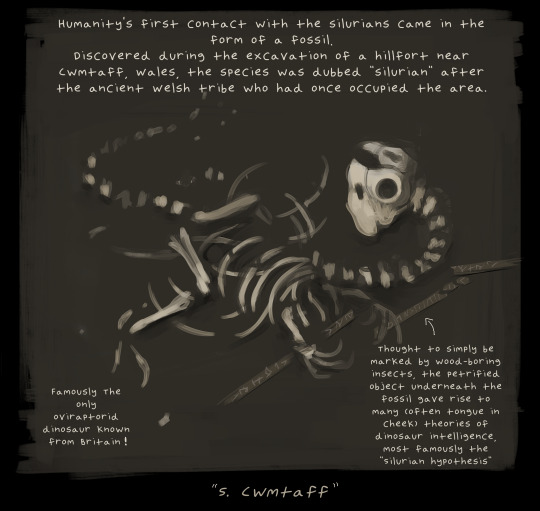




The genus Silurian ("Person of the Silures", in reference to the historical territory of Wales in which they were first found) was initially known only from a single fossil, notable in part for the unusual object fossilized alongside it (1). Though this was generally accepted to simply be a large petrified stick, the "Silurian Artifact" was often a point of discussion in the topic of dinosaur intelligence and the theory of pre-human civilizations. It wasn't until large-scale mining operations began to impede on their extensive networks of stasis chambers that the Silurians themselves finally woke up and were able to meet humankind in person. To the surprise of many (and dismay of a few) the Silurians were not the scaled, humanoid "dinosauroids" so often depicted, but colorful, feathered, and relatively goose-shaped.
Most Silurians who were present in the planet's underground represent the gentry and high ranking military, who were given priority in the earth-based shelters. Most others were evacuated on large, extensive spaceships, all of which are yet to return to Earth. Due to this, the varied mindsets and cultures of the Silurians are in shambles at best, largely replaced by the speciesism and real estate concerns of the upper classes.
(1) Much later, the original type fossil was identified as Rohlik, a student who fell to his death after attempting to drunkenly pole vault over a ravine with a large petrified stick.
#in universe cow tools is a reference to this#doctor who#All The Strange Strange Creatures#thank you rachel for reminding me of the origin of the term silurian . my life in your hands#speculative biology
4K notes
·
View notes
Text
Emotions in writing
The following examples have been taken from the book The Emotion Thesaurus: A Writer's Guide To Character Expression by Angela Ackerman & Becca Puglisi - make sure to get the book!
Confidence
Definition: having faith in one’s own influence and ability
Physical signals:
Strong posture (shoulders back, chest out, chin high)
Walking with wide steps
Strong hygiene and personal grooming
Holding the hands loosely behind the back
Touching one’s fingertips together (tapping, forming a steeple)
A gleam in one’s eye, an inner light
Smiling, a playful grin
Winking or giving someone an easy nod
Keeping one’s hands out of the pockets
Appearing relaxed (drumming fingers against a leg, humming)
Taking up space (legs spread wide, arms loose at the sides)
Approaching people with ease
Looking others directly in the eye
Arms swinging while walking
Choosing the middle, not the sides (be it a couch or a room)
Using exaggerated movements to draw attention to oneself
A booming laugh
Showing comfort in the close proximity of others
Initiating contact
Telling jokes, adding to or steering a conversation
Hosting events (getting the guys together for a football game)
Openness when dealing with people
Appearing unbothered by what others may think
Leaning in to talk or listen
Increased physical contact, becoming touchy-feely
Running hands through one’s hair or flipping the hair back
Assuming a pose that draws attention to one’s best attributes
Wearing clothes that are flashy or dramatic
Internal sensations:
Relaxed muscles
Easy breaths
Lightness in the chest
Cues of acute or long-term confidence:
Doing or saying things outside of the norm without anxiety or concern
Obsessively talking about an achievement or material object
Reacting with anger or jealousy if one’s reputation is impugned
Bragging, showing off
Cues of suppressed confidence:
Minimizing compliments
Modesty
Changing the topic to bring others into the spotlight
Downplaying one’s own comfort level to make others feel better
Asking for opinions or advice
#emotions in writing series#writing tips#writing advice#writing help#writing tools#writing resources#emotions in writing#writing life#writingblr#creative writing#on writing#writers of tumblr#writing community#writeblr#writing references#emotions and writing
685 notes
·
View notes
Note
I found out your were on Tumblr because Neil Gaiman reblogged something of yours. I enjoy the fact that you both get the "are you really ____" asks. People's incredulity at you both being on this site makes me smile.
I can't speak for Neil, but speaking for myself, a weird elder who lives in the deepest part of the oldest woods, I love it when someone wanders by and notices this little cottage that's pretty much been here since before the woods were planted.
#not that it matters but i genuinely enjoy tumblr and want to protect it#i can call it a hellsite but if you do we are gonna fight#tumblr og from the first ep#okay a tool reference is absolutely a bridge too far#thank you for coming to my ted tags talk
8K notes
·
View notes
Text


Item: can of Creak Oil, which ensures that hinges on doors and gates in spooky areas creak properly to ensure ambiance.
2K notes
·
View notes
Text
Curated Spotify playlists to liven up your D&D sessions!
I have always loved playing D&D with background music that fits the location, mood, or type of combat, so I created several playlists on Spotify. This project is something I've been working on since December 2019, and something I want to share with you all! You can find the list below.
If you have suggestions for songs/tracks to include, or if you want a specific playlist that is not in this list yet, please let me know! And most of all, have fun!
Locations
Astral Plane
Ball/Masquerade
Bazaar
Castle/Court
City
Desert
Dungeon
Festival
Forest
Jungle
Monastery
Mountains
Schools of the Arcane
Ship
Tavern
Temple
Town/Village
Underwater
Moods
Creepy/Eerie
Dramatic
Enchanted
Energetic/Adventurous
Heroic
Grand
Intrigue
Menacing
Mysterious
Night
Peaceful
Sad/Mourning
Silly
Tender/Emotional
Combat
Small Battle
Big Battle
Boss Battle
Tavern Brawl
Chase
Themes/settings
Ancient Greece
Bard songs
Patrons/Visions
Visions/Dreams
#dnd#dnd 5e#ttrpg#music#spotify#playlist#writing#writing inspiration#spotify playlist#d&d#dungeons and dragons#worldbuilding#dm tools#resources#reference
1K notes
·
View notes
Text
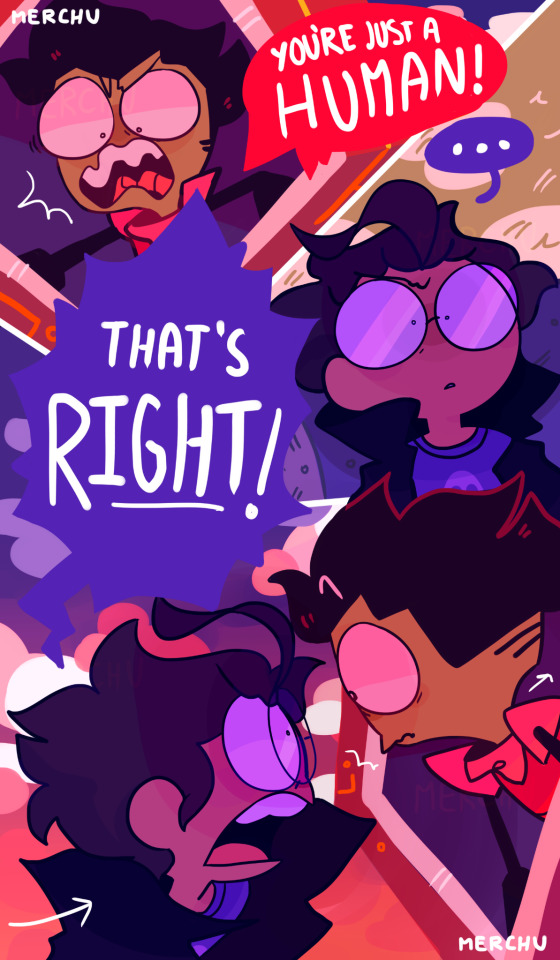
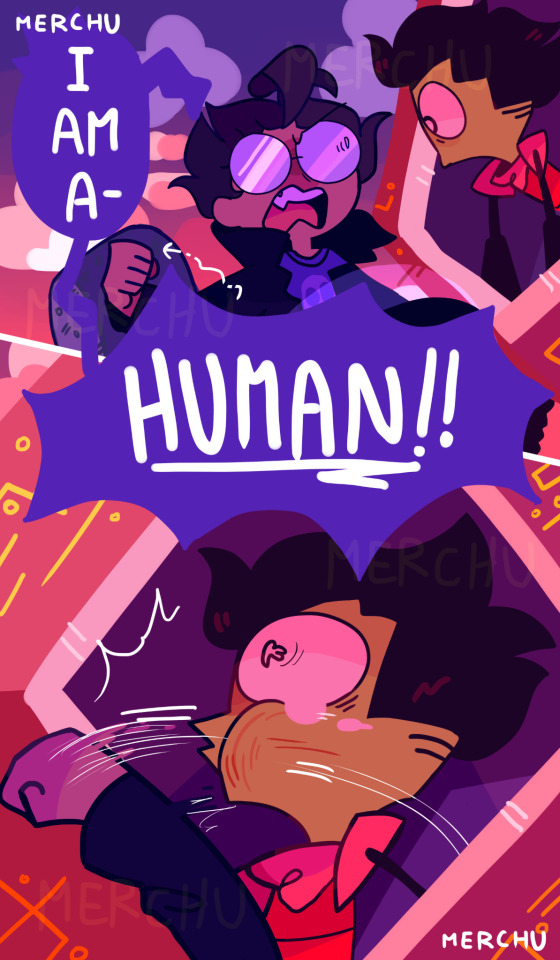
.。° ✧ i'm rewatching Steven Universe series with my brother, and this scenery came to my head when we got to this episode ("Back to the Barn" S2). I think this part fits them pretty well
Or maybe i just wanted to draw angry expressions and Zim being punched in the face--
Dejo versión en español también juju<3


#maybe i could make an extended animatic version of this#i would be amethyst cheering for dib#paint tool sai#art#fanart#digital art#invader zim#invasor zim#iz#zim#dib#dib membrane#dib membrana#iz zade#zade#steven universe#su#steven universe reference#back to the barn#steven universe season 2
564 notes
·
View notes
Text
Character Name Ideas
-> a masterpost of name ideas for your characters.
-> requests open for names with specific vibes.

If you like what I do and want to support me, please consider donating! I also offer editing services and other writing advice on my Ko-fi!
I also have a Patreon! Become a member to gain access to a Member's Only Community where you can chat and message other members and myself. Also gain access to my personal writing, which includes completed short stories, chapters from novels in progress, as well as completed scenes.

Alphabetical First Names:
A B C D E F G H I J K L M N O P Q R S T U V W X Y Z
Other Name Ideas:
Cottagecore Names
Dark Academia Names
Greek Mythology Names
#character names#character name ideas#name ideas#name suggestions#name list#character name analysis#oc names#ocs#oc name ideas#masterpost#writeblr#surname ideas#original character#creative writing#writing references#writing resource#writing tools#writing advice
618 notes
·
View notes
Text

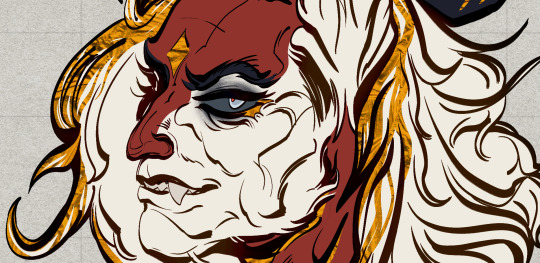

Semi-custom for ElementStar on Toyhouse! This was based off a sketch done by Noahdopt on Deviantart
#finished#digital#digital art#digital drawing#reference sheet#ref sheet#design#custom design#harpy#humanoid#creature#monster#fantasy#paint tool sai#photoshop#character design
209 notes
·
View notes
Text
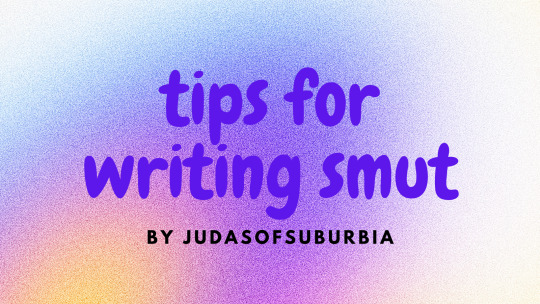
So you’re looking to write some smut but feeling stuck, uninspired, or unsure where to start. Smut writing comes easily to some and not others, and that’s okay! Here are some tips I’ve gathered over my few years of writing smut to take with a grain of salt! It's my opinion; you can always do what you want!! <333
It’s fiction writing at the end of the day. So, it’s okay if you haven’t experienced what you’re writing about or maybe you have experienced it but you find it difficult to put it into words. I’ve never fought a creature from the Upside Down but I’ve written about it because that’s what fiction writing IS!! You’re creating a story from your own experiences/thoughts/emotions and applying it to a made-up scenario. So don’t feel discouraged by your own personal journey, anyone can write smut!!
When in doubt, plan it out. When I’m really stuck, just simply grabbing a piece of notebook paper and writing out each event in a sequence, even in the most basic terms, can make things so much easier. For example: making out, blow job, hand job, prep, fuck. Write down positions (sometimes limbs can get lost in the sauce and it is so hard to figure out how they’re actually doing it lmao). Write down settings. Write down if one person is leading it more than the other or if they switch off. Write down desperation levels (personally, I think it’s more fun when desperation is very high but casual fluffy smut is fun too!!) This will help the writing process feel a lot less daunting.
More specifically, remember that prep is important. I can’t tell you how many times I’ve been taken out of a smutty fic because they get to the main act (penetration, typically) way before someone should be ready to. Fingers, mouths, and lube (actual lube or something that can be safely used as lube. Blood is not lube. Blood is not lube as it is a liquid that dries quickly and offers no moisture so it will not help you penetrate anything, as hot as it would be.) Foreplay and prep can be a really good tool to establish a sexy dynamic between your characters and get the reader ramped up to read through to the end!
If you feel like the action part is getting too technical, this is where you can add in thoughts and emotions that will give your smut some personality. It can feel very silly to write, for instance, your character A thinking “Wow character B is so hot” but it’s a thought that would probably cross their mind!! Write out any nerves the characters are feeling or maybe even the confidence they’re feeling. Write out what sensations they pay attention to. Write out what they like and dislike. Write out what actions cause an immediate response from them (moaning, bucking their hips, groaning, eyes rolling, etc.) Write out how your character would verbally respond (Are they dirty talking? Are they praising? Are they degrading? Are they stuttering through their words? Are they incoherent because the sex is so good?) It’s important that your characters still feel natural and not like sex robots. Unless your story is about sex robots, then go off!!!
The thesaurus is your fucking FRIEND!! Smut can feel ridiculously repetitive, especially if you’ve written it before. I say every time I write a blow job scene that “god blow job scene is blow job scene is blow job scene” because that’s how it FEELS! Use your resources like the thesaurus or there are a million posts with other ways to say “said”, ways to describe a kiss, etc. Just be careful that you don’t fall into using words that seem unnatural to the flow of the story (for example, a lot of synonyms for cock are simply…unsettling and can take your reader out of the story). Find ways to creatively tell the same action again and again which leads to tip #5…
Go read some smut. The tag “porn what plot” is so unbelievably helpful. Even if the writing isn’t exactly your style or your preference, sometimes reading someone else’s descriptions of sexual acts can be helpful if you’re lost! I have a few faves that I go back to read to get inspiration and I have notes about what it is specifically I enjoyed about their work. While you’re at it, if a fic inspires you and you feel comfortable doing so, leave a comment! It’ll make the author’s day, I promise.
TAKE THIS TIP WITH AN ABSOLUTE GRAIN OF SALT but…go watch it. Or my personal preference, go listen to it. If I’m really lost, I’ll seek out audio porn that follows the same ~vibe~ of whatever I’m writing. There are many websites for this but Soundgasm is my go-to (it’s a free upload site so there are THOUSANDS of sounds and varying quality levels so it might take a second to find what you’re looking for)! Even a sexy playlist on Spotify can put you into a good headspace for writing. Just make sure you’re being safe and looking out for your own comfort levels. Never put yourself in a situation to experience something triggering for the sake of writing a good story.
All of this to say, it is so different to write smut than it is to write a regular plot. It can feel incredibly daunting to go about it and find the perfect balance between technical actions and thoughts/feelings/dialogue and then make it all cohesive in the end. It’s hard to do but it’s not impossible!
#i hope this is helpful in some way!!#writing#writing tips#fanfiction writing#smut#smut writing#fanfiction#archive of our own#writing tools#writing reference#references#reference
726 notes
·
View notes
Text
Forging Epic Battles: Techniques for Writing Gripping War Scenes
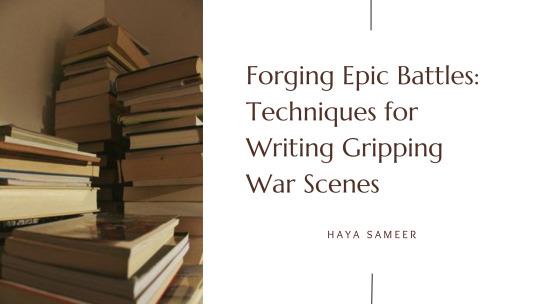
I want to start this post off with sort of an author's note: this is a long one! I tried to keep my detailing to a minimum but I guess this topic Is just so vast I couldn't help but pour it all out. This really is sort of an ultimate guide and I hope it helps! Also, it was requested by @xweirdo101x (if you want to request something just send me an ask)
War has long captivated readers' imaginations, evoking a sense of grandeur, sacrifice, and the clash of ideologies. As writers, we have the power to transport our readers to the frontlines, immersing them in the chaos, drama, and emotion of epic battles.
Crafting gripping war scenes requires a delicate balance of research, skillful storytelling, and an understanding of the human experience in times of conflict. In this guide, I will explore various techniques that will help you create dynamic and compelling war narratives, transporting your readers to the heart of the action and leaving them breathless.
Setting the Stage: Creating a Compelling War Setting
When it comes to writing gripping war scenes, creating a vivid and immersive setting is paramount. Whether you are crafting a historical war or inventing a fictional conflict, the setting serves as the backdrop against which your characters and their stories unfold. Here are essential steps to help you create a compelling war setting that captures readers' imaginations:
Research Historical Context or Build a Fictional World:
For historical wars, immerse yourself in research to understand the time period, social dynamics, and political climate surrounding the conflict. This knowledge will lend authenticity and depth to your narrative.
If you're building a fictional world, establish the rules, geography, and cultural aspects that shape the war. Consider the unique elements that set your world apart and make it feel real to readers.
Describe the Physical Environment and Atmosphere:
Depict the landscape, whether it's a war-torn city, a rugged battlefield, or a desolate wasteland. Pay attention to sensory details—sights, sounds, smells—to transport readers into the heart of the war.
Convey the atmosphere of the setting, capturing the tension, fear, or anticipation that hangs in the air. Is it shrouded in darkness and despair, or does a glimmer of hope persist? Use descriptive language to evoke the desired emotional response.
Incorporate Cultural and Societal Elements:
Explore how the war has affected the culture and society within your setting. Are there new traditions, rituals, or customs that have emerged in response to the conflict?
Consider the social dynamics at play—class divisions, power struggles, or the impact of war on marginalized groups. These elements add layers of complexity to your setting and provide opportunities for conflict and character development.
By carefully constructing your war setting, you transport readers into a world brimming with authenticity and intrigue. Whether it's the trenches of World War I, a futuristic intergalactic battle, or a mythical realm engulfed in strife, the setting sets the stage for compelling storytelling.
Building Conflict and Tension
In the realm of war fiction, conflict and tension are the driving forces that propel your narrative forward and keep readers captivated. From the clash of opposing ideologies to the internal struggles within characters, here are essential techniques for building conflict and tension in your war scenes:
Establish Clear Goals and Stakes for Characters:
Define the objectives and desires of your main characters within the war. What are they fighting for? What personal or collective goals are at stake?
Create conflicts of interest between characters, where their motivations and objectives may diverge, leading to tension-filled interactions and confrontations.
Introduce Opposing Forces and Ideologies:
Develop compelling adversaries that challenge your protagonists. These opposing forces may represent different sides of the conflict, ideologies, or even personal vendettas.
Explore the contrasting beliefs, values, and philosophies driving each side, heightening the ideological clash and intensifying the conflict.
Utilize Internal Conflicts within Characters:
Explore the internal struggles and moral dilemmas faced by your characters. How does the war affect their beliefs, principles, and sense of self?
Delve into the emotional turmoil and psychological toll of war, showcasing the internal battles characters face as they navigate the chaos and make difficult choices.
By effectively building conflict and tension, you create a dynamic and engaging narrative that keeps readers invested in your war story. The clash of goals, the ideological friction, and the internal struggles of your characters add layers of complexity and depth to your storytelling, drawing readers deeper into the heart of the conflict.
Developing Dynamic Characters
In the realm of war fiction, dynamic and well-developed characters are essential to breathe life into your narrative and create an emotional connection with readers. By crafting relatable protagonists and antagonists, you elevate the impact of your war story. Here are key considerations and techniques for developing dynamic characters within the context of war:
Crafting Relatable Protagonists:
Give your main characters depth and complexity by exploring their backgrounds, motivations, and personal histories. What drives them to participate in the war? What are their hopes, fears, and vulnerabilities?
Develop relatable goals and desires for your protagonists that resonate with readers. Show how the war impacts their lives and pushes them to grow, change, or make difficult decisions.
Creating Compelling Antagonists:
Craft antagonists who are more than just one-dimensional villains. Give them their own motivations, beliefs, and reasons for engaging in the war. This adds depth and complexity to their characters, creating a sense of empathy or understanding.
Explore the potential for redemption or transformation within your antagonists. Are they driven by misguided ideals, personal vendettas, or the pressures of their circumstances? Allow their development to challenge readers' perspectives.
Conveying the Psychological Impact of War:
Explore the emotional and psychological toll that war takes on your characters. Depict their fears, traumas, and inner conflicts as they grapple with the horrors and realities of the battlefield.
Show the evolution of their beliefs and perspectives as they confront the brutalities of war. Allow their experiences to shape their character arcs, highlighting the resilience, resilience, and vulnerabilities that emerge in the face of adversity.
By developing dynamic characters in your war narrative, you create a multi-dimensional and emotionally resonant story. Readers will become invested in their journeys, experiencing the triumphs, losses, and personal transformations that unfold throughout the war.
Writing Action-Packed Battle Scenes
Action-packed battle scenes are the heart of war fiction, where the intensity and stakes are at their highest. These scenes immerse readers in the chaos, danger, and adrenaline of the conflict. To craft gripping battle scenes, consider the following techniques:
Structuring Battle Sequences for Maximum Impact:
Begin with a clear sense of purpose for the battle scene. What are the objectives? What is at stake? Establish the goals and set the stage for the conflict.
Build tension gradually, starting with smaller skirmishes or encounters that escalate toward the climactic moments. Consider pacing, alternating moments of heightened action with moments of respite for emotional impact.
Balancing Fast-Paced Action and Descriptive Details:
Use concise and vivid language to convey the fast-paced nature of battle. Focus on capturing the essence of the action, highlighting key movements, and sensory details that immerse readers in the experience.
Strike a balance between brevity and providing enough detail to engage the reader's imagination. Avoid overwhelming readers with excessive description, ensuring that every word serves a purpose and contributes to the overall impact.
Using Sensory Language to Immerse Readers:
Engage multiple senses to transport readers into the battle scene. Describe the sights, sounds, smells, and tactile sensations to evoke a visceral experience.
Leverage sensory details to enhance the emotional impact of the battle, capturing the fear, adrenaline, and urgency felt by characters and evoking a similar response in readers.
Good action-packed battle scenes bring the war to life on the page, immersing readers in the heart-pounding action. Remember to focus not only on the physical aspects of combat but also on the emotional and psychological experiences of your characters.
Conveying Emotional Resonance
In war fiction, it is crucial to convey the emotional impact of the conflict on both individual characters and the larger society. By tapping into the raw emotions experienced during times of war, you can create a profound connection with your readers. Here are key techniques for conveying emotional resonance in your war narrative:
Show the Human Cost of War:
Portray the personal sacrifices, losses, and tragedies that characters endure in the face of war. Highlight the emotional toll on their relationships, families, and communities.
Explore the range of emotions experienced by characters, such as fear, grief, anger, and resilience. Through their struggles, allow readers to empathize with the profound impact of war on the human psyche.
Engage the Senses to Evoke Emotion:
Utilize sensory language to evoke emotions within readers. Describe the sights, sounds, smells, and tactile sensations associated with war to create a vivid and immersive experience.
Connect specific sensory details to the emotions they evoke. For example, the acrid stench of smoke may elicit a sense of danger or the distant cries of anguish may stir feelings of sorrow.
Develop Authentic and Complex Relationships:
Showcase the bonds formed and tested amidst the chaos of war. Explore friendships, romances, and the camaraderie among soldiers to highlight the connections that sustain characters in the face of adversity.
Depict the conflicts and tensions that arise within relationships due to the strain of war. This adds layers of emotional complexity and authenticity to your narrative.
By effectively conveying emotional resonance, you invite readers to experience the human side of war. They will connect with the characters on a deeper level and become emotionally invested in their journeys.
Navigating Moral and Ethical Dilemmas
War is often accompanied by moral and ethical dilemmas that test the values and principles of individuals and societies. As a war fiction writer, it is important to explore these complexities and shed light on the difficult choices characters face. Here are key considerations for navigating moral and ethical dilemmas in your war narrative:
Present Conflicting Perspectives:
Introduce characters with differing moral viewpoints and beliefs. Show the diversity of perspectives within the war, whether it's among the protagonists, antagonists, or the larger society.
Challenge readers to contemplate the gray areas of morality and the complexities of right and wrong by presenting conflicting viewpoints and the reasons behind them.
Highlight the Consequences of Choices:
Illustrate the consequences of characters' actions and decisions. Showcase how their choices ripple through the narrative, affecting themselves and those around them.
Explore the moral dilemmas characters face, such as choosing between duty and personal convictions, sacrificing the few for the many, or grappling with the aftermath of their actions.
Offer Reflection and Discussion:
Provide opportunities for characters to reflect on their choices, engaging in internal dialogue or discussions with others. This allows readers to contemplate the moral implications alongside the characters.
Invite readers to reflect on their own moral compass and engage in discussions surrounding the ethical dimensions raised in your war narrative.
Navigating moral and ethical dilemmas makes your war fiction go beyond the surface-level action and delve into the deeper questions of humanity. It prompts readers to question their own values, moral boundaries, and the intricate web of choices that arise in times of conflict.
Research and Authenticity in War Fiction
For war fiction to have a lasting impact, it is crucial to conduct thorough research and strive for authenticity in your narrative. By grounding your story in accurate details and historical context, you enhance its credibility and immerse readers in the world of war. Here are key considerations for incorporating research and authenticity in your war fiction:
Study Historical Events and Settings:
Research the historical events, conflicts, and time periods that serve as the backdrop for your war narrative. Gain a comprehensive understanding of the context, including the political, social, and cultural factors that influenced the war.
Dive into the specifics of battle strategies, weaponry, and tactics employed during the time period. This knowledge will help you create authentic and realistic war scenes.
Explore Personal Accounts and Memoirs:
Read personal accounts, memoirs, and interviews of individuals who have experienced war firsthand. These sources provide invaluable insights into the emotions, challenges, and nuances of the human experience during wartime.
Pay attention to the details of daily life, the physical and psychological tolls, and the individual stories of courage, sacrifice, and resilience. Incorporate these elements into your narrative to add depth and authenticity.
Consult Experts and Military Advisers:
Seek guidance from military advisers, historians, or experts in the field to ensure accuracy in depicting military operations, protocols, and terminology.
Engage in conversations or interviews with individuals who have expertise in areas relevant to your story, such as veterans, soldiers, or scholars. Their perspectives can offer valuable insights and help you portray the realities of war with authenticity.
Strive for Emotional Truth:
While research and accuracy are crucial, remember that emotional truth is equally important. Balance historical accuracy with the emotional resonance of your characters and their experiences.
Capture the human aspects of war, such as the impact on relationships, the psychological trauma, and the bonds forged in the face of adversity. Connect readers to the emotional core of your story.
By incorporating thorough research and striving for authenticity, you create a rich and immersive war narrative that resonates with readers. The combination of accurate historical details, personal accounts, and emotional depth brings your story to life.
War fiction is a genre that holds immense power to captivate readers, evoke emotions, and shed light on the complexities of human nature during times of conflict. Through the techniques and considerations I have explored in this guide, you have the tools to craft compelling war narratives that resonate with authenticity and engage your readers on a profound level.
I hope this blog on forging epic battles will help you in your writing journey. Be sure to comment any tips of your own to help your fellow authors prosper, and follow my blog for new blog updates every Monday and Thursday.
Looking For More Writing Tips And Tricks?
Are you an author looking for writing tips and tricks to better your manuscript? Or do you want to learn about how to get a literary agent, get published and properly market your book? Consider checking out the rest of Haya’s book blog where I post writing and marketing tools for authors every Monday and Thursday
#hayatheauthor#haya's book blog#haya blogs#writing prompt#writing tools#writing stuff#creative writing#writing tips#writing blog#writer community#writing advice#writer tips#writing community#writer things#writing life#writing things#writing tip#writing techniques#writing topics#writing tool#writing tumblr#writing resources#writing inspiration#writing inspo#writing reference#writer#writersofinstagram#writers on tumblr#writers block
582 notes
·
View notes
Text

i need them to be friends so badd!!!!!!! theyre my special little guys!!!!
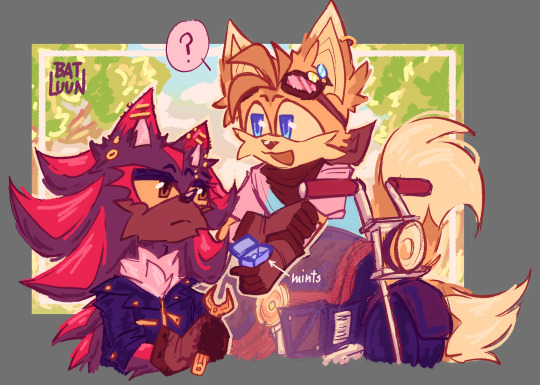

#my art#shadow would call tails by miles methinks#just a cute little hc#also shadow is repairing his bike in the drawing and needed to borrow tails' tools lol#i wanted to give tails a green bandana to match sonic eye color (and gove sonic a cyan bandana to match) but#the colour scheme was not fucking working w me😔#especially with sonics blue.. adding a cyan would just not work too well methinks#well maybe..#i need to draw em all a reference sheet already fuckkk lol#sth#sonic fandom#sonic the hedgehog fanart#sonic the hedgehog#sonic fanart#shadow the hedgehog#miles tails prower#sonic the hedghog fanart#sonadow
395 notes
·
View notes
Text
i love how every time winry is unimpressed with edward she just suddenly has a wrench in her hand like who knows where it comes from she just has it ready to smack him over the head with
#like pls is this some leo valdez magic tool belt shit??#like she just carry it around#and DAMN like a wrench is a bit much#winry rockbell#edward elric#edwin#fullmetal alchemist#fullmetal alchemist brotherhood#fma#fmab#(hehe yes pjo reference)
203 notes
·
View notes
Text
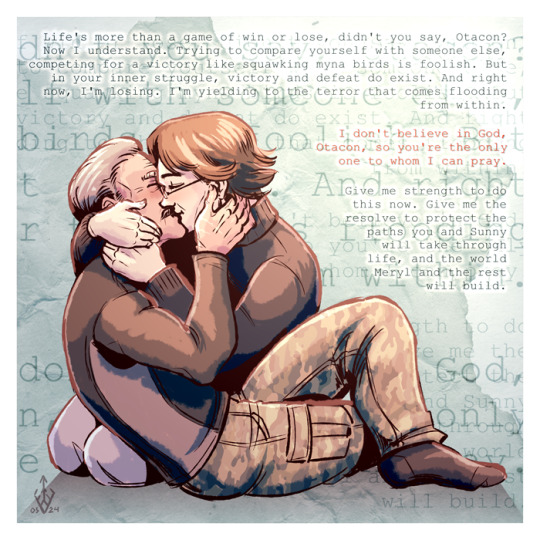
Old man yaoi, because I literally cried over Snake today and I need to somehow make the version of him that lives in my brain feel loved and cherished.
☕ Support me on Ko-Fi ☕
#metal gear solid#mgs#mgs4#metal gear solid 4#otasune#solid snake#dr. hal emmerich#otacon#you can tell that I used a reference for the shoulders upwards and then futzed the rest of the post kill me#fanart#digital art#paint tool sai
125 notes
·
View notes
Text
PEPPINO BODY REFERENCE + HEADCANONS‼️

I'm really happy with how this turned out, I always had trouble finding a way to draw him that I liked, but now I finally managed to solve that problem!
And yes, in my head, Peppino is 40 years old
.
EXTRA‼️

I still have a few more headcanons, but I decided to only include the ones that I think are most important (in my opinion)
.
SOME EXTRA HEADCANONS!
Peppino really likes to wear button-down shirts, but he doesn't show his chest too much because of the scars
I don't know if you can see it in the reference drawing above, but I imagine he has a little dark circles under his eyes (this is due to a lot of work and some nights he couldn't sleep well)
As much as it may not seem like it, Peppino likes to sleep hugging something soft, most of the time being his pillow (I thought that would be cute) Because he feels safe and also finds it quite comfortable
He LOVES old music (80s/90s) and his favorite singers are "Bon Jovi", "Freddie Mercury" and "Elton Jhon"
When he's saying something nervous (or just talking a lot), he has a habit of making gestures with his hands
He only takes off his shirt in front of someone he trusts A LOT (but even then, he's shy and a little embarrassed, so take care of this man as if he were a piece of cotton PLS)
#pizza tower#pizza tower peppino spaghetti#pizza tower peppino#pizzatower#peppino spaghetti#peppino pizza tower#pizza tower fanart#headcanon#headcannons#body reference#tw maybe suggestive?#digital art#artists on tumblr#digital drawing#small art account#digital aritst#draw#paint tool sai#paint tool sai art#pizza tower doodle#digital doodles#scars#original art
106 notes
·
View notes
Text


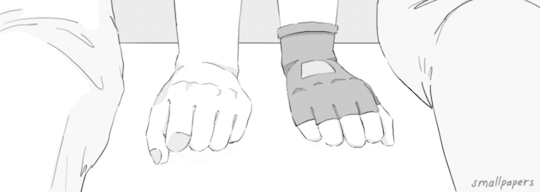
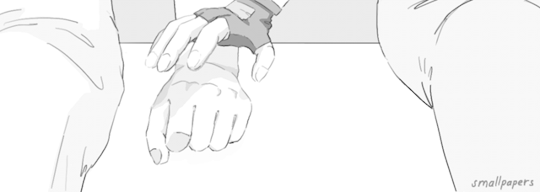
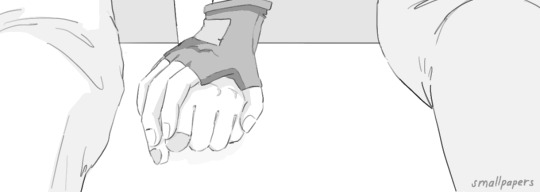
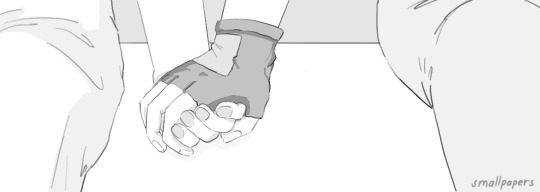
a moment with you
don't forget about yourself.
please click for higher resolution! (you.are.here series: tag/masterlist)
#the owl house#huntlow#hunter wittebane#willow park#luz noceda#amity blight#gus porter#augustus porter#toh kings tide#toh comic#myart#the golden guard#i semi-rotoscoped my own hand as an animation reference#i hope this formatting is readable!! also sorry if you cant read my handwriting but i refuse to deal with the procreate text tool#long post#yes theres at least 3 diff art styles in 1 post RIP#youarehere toh
7K notes
·
View notes
Text
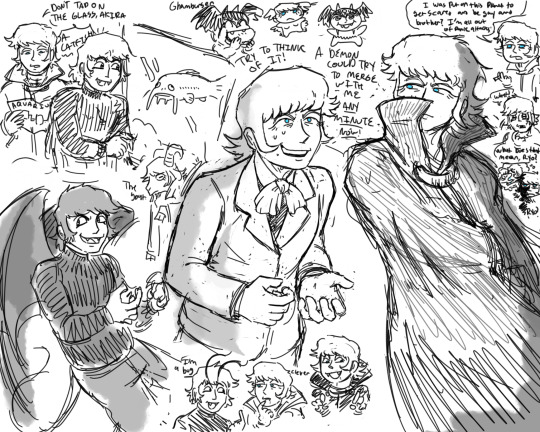
Nothing ever changes in scrap world
#GUYS ITS STILL STUDYING IF YOU LISTEN TO A LECTURE WHILE U DRAW#devilman#These guys are such fun to draw I think I could take more stylistic liberty with their hair but it’s funnnnnnn it’s fun#i should draw Akira more. he’s a little guy#the reason he’s looking at a catfish is cos I like catfish so much#this time FEATURING illegible handwriting . ever wonder why on anything moderately finished with writing i use the text tool? yeah#also why i write in all caps i think its more readable in all caps#anyways yeah i love. that outfit hes wearing with the silk scarf. its reallyfunny to me.#he definitely shouldn't have been at the club we tried that out and it didn't work. maybe he should have been in the microwave or something#edit i drew his eyeliner wrong? this is what happens when you dont look at a reference
87 notes
·
View notes